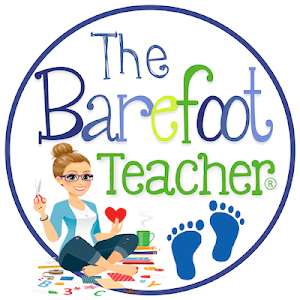(Not familiar with the NGSS standards? Then take some time to read "Getting to Know the Next Generation Science Standards: Kindergarten" first.)
Today, I'm going to focus on the "From Molecules to Organisms: Structures and Processes" standard....which I just simply call my "Living Things" unit. I'll show you all the different parts to my Living Things Interactive Notebook.
This standard can really cover a lot. I mean, you could go into a whole unit on plants, and then another on different life cycles. You could cover different kinds of habitats...there's just so much that you could dive into. So you'll have to pick and choose what works best for you. As far as the interactive notebook goes, it might be something that you just pick pages from as you cover the units you're teaching.
Each science interactive notebook set, including this one, comes with a set of corresponding classroom posters to hang around your room. The vocabulary I chose for the Living Things unit are the seven characteristics of living things:
-Til next time
This standard can really cover a lot. I mean, you could go into a whole unit on plants, and then another on different life cycles. You could cover different kinds of habitats...there's just so much that you could dive into. So you'll have to pick and choose what works best for you. As far as the interactive notebook goes, it might be something that you just pick pages from as you cover the units you're teaching.
Each science interactive notebook set, including this one, comes with a set of corresponding classroom posters to hang around your room. The vocabulary I chose for the Living Things unit are the seven characteristics of living things:
Each idea covered also comes with its own interactive notebook cover.
The cover pages for each core idea will help your students keep their notebook well organized.
Here is the vocabulary reinforcer:
The Pocket full of Vocab matches the poster set (shown above). Have students pull the cards out of the pocket and review the meanings of the terms. They can quiz themselves, quiz a neighbor, and even write short definitions on the back to help them remember.
After you've talked about the seven characteristics of living things, you can have students look at the pictures below and determine which are living and which are non-living.

As I mentioned in a different interactive notebook post, I've noticed that kids LOVE to prove how smart they are. So I created this page that not only reinforces your class discussions throughout the various Living Things units you cover, but also give the kids a chance to feel smart, review their friends, and practice what they've learned.
Students simply pull out one of the many questions and either answer the questions or do what it says.
There are so many fun directions you can go with this standard. Use the interactive notebook to reinforce everything you talk about in the classroom. It will serve as a great "memory book"...a reminder, as they flip through each page, of what activities they did and what conversations you guys had on the topic.
The Pocket full of Vocab matches the poster set (shown above). Have students pull the cards out of the pocket and review the meanings of the terms. They can quiz themselves, quiz a neighbor, and even write short definitions on the back to help them remember.
After you've talked about the seven characteristics of living things, you can have students look at the pictures below and determine which are living and which are non-living.
Most of your kids are going to know the obvious animal pictures, but many might not realize that plants are alive!
Next, you're going to reinforce your lessons on what living things need in order to survive:

Students will flip open each flap and jot down what that specific picture needs to survive. This is a great opportunity to again bring up the similarities and differences in the needs of living things. The pumpkin needs dirt...but the jellyfish doesn't. The pig does, though!
What about the habitats of living things? How do different living things get their nutrients to grow?
Use a pencil and paperclip to spin and tell about where the different animals live. Cut, paste, and glue the correct form of nutrients on the "Where is My Food?" activity page, and practice your illustrating skills under the flaps on the "Where do I Live?" page!
Students simply pull out one of the many questions and either answer the questions or do what it says.
There are so many fun directions you can go with this standard. Use the interactive notebook to reinforce everything you talk about in the classroom. It will serve as a great "memory book"...a reminder, as they flip through each page, of what activities they did and what conversations you guys had on the topic.

































































